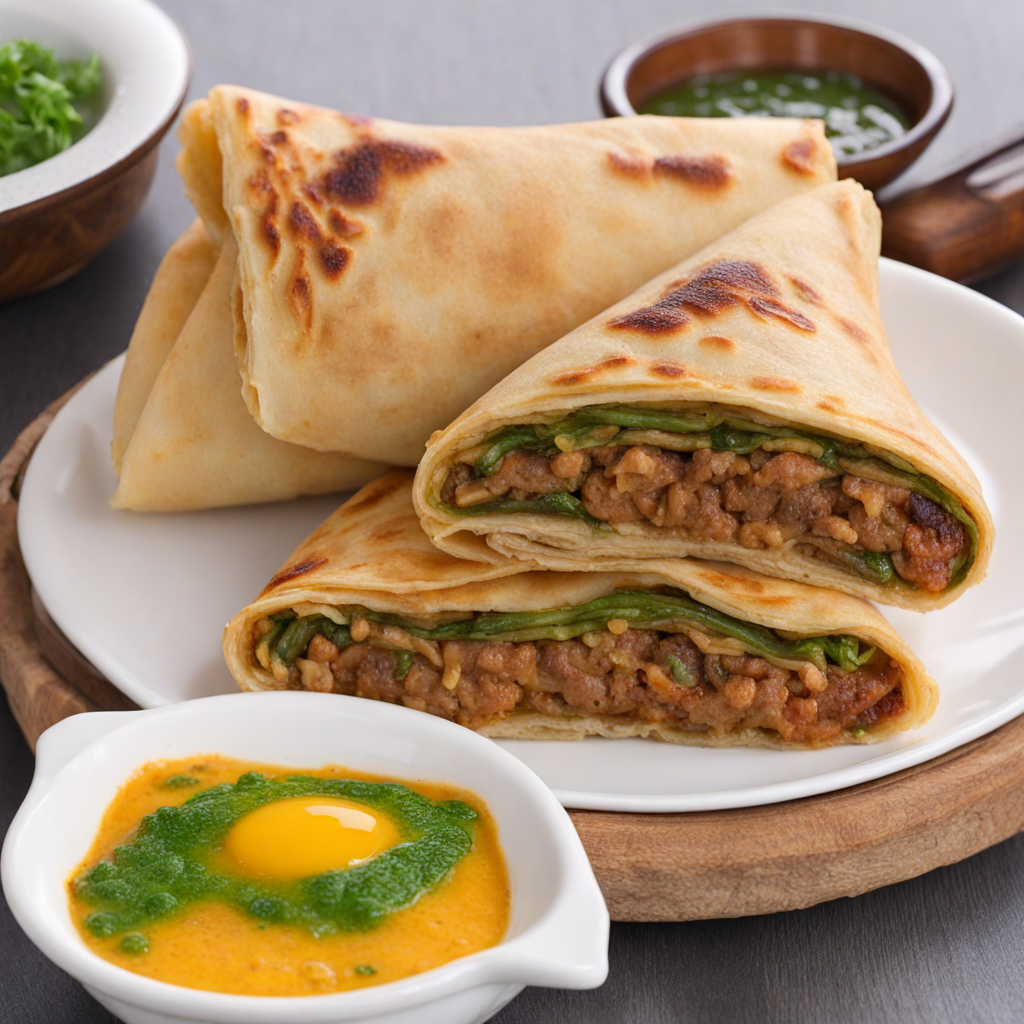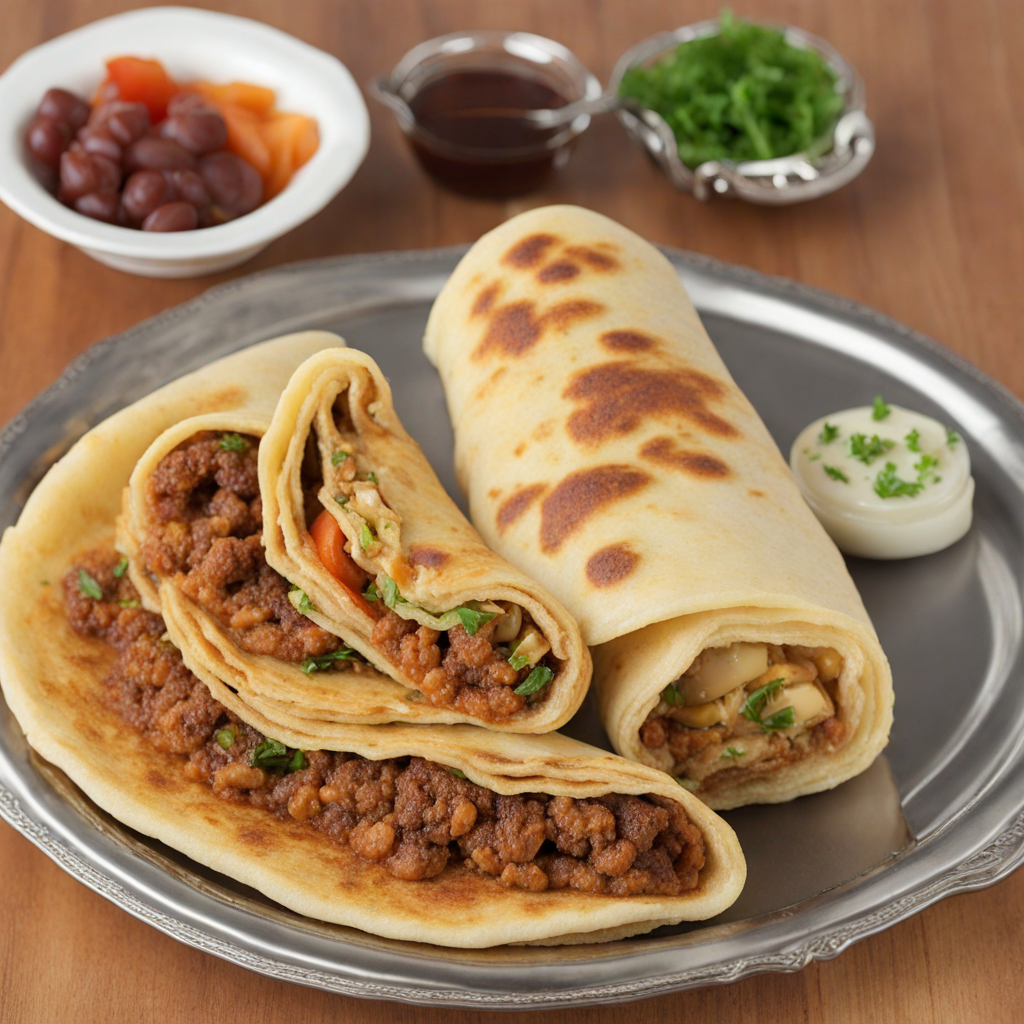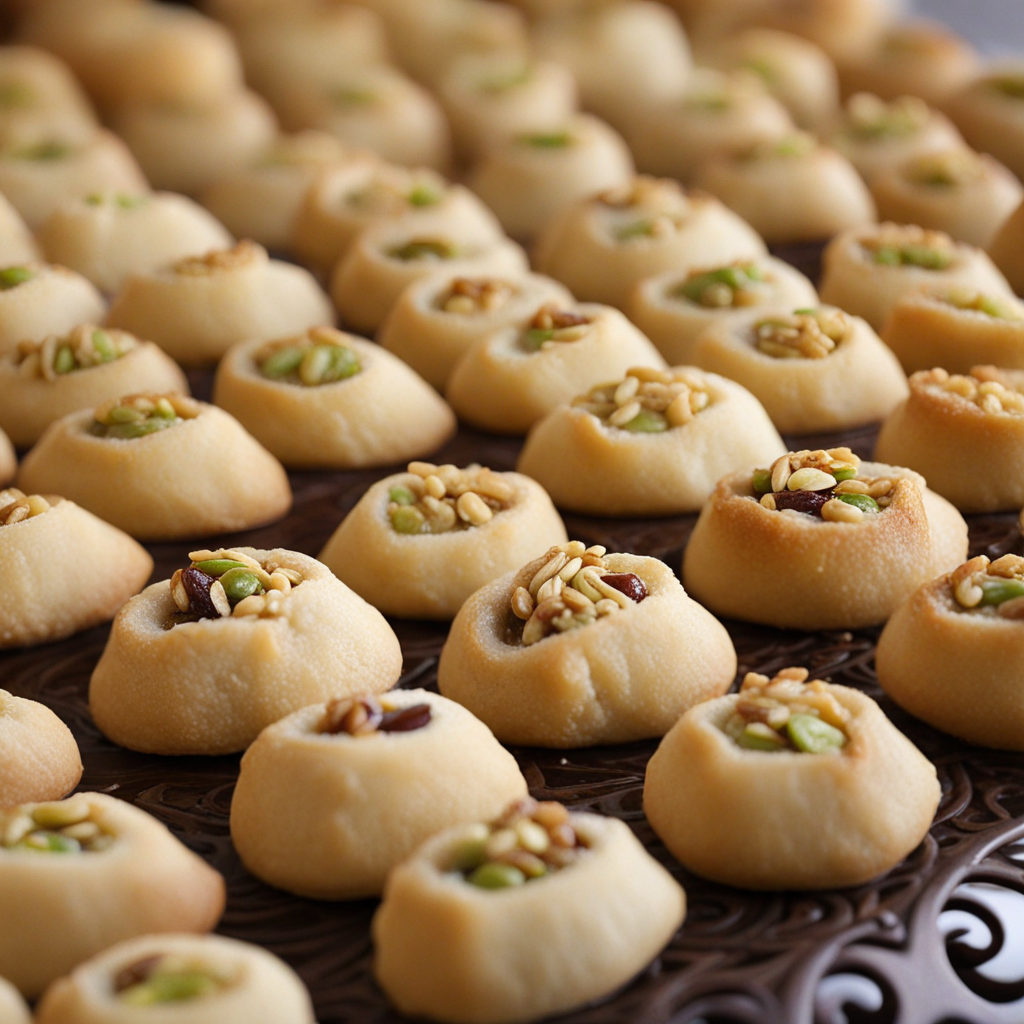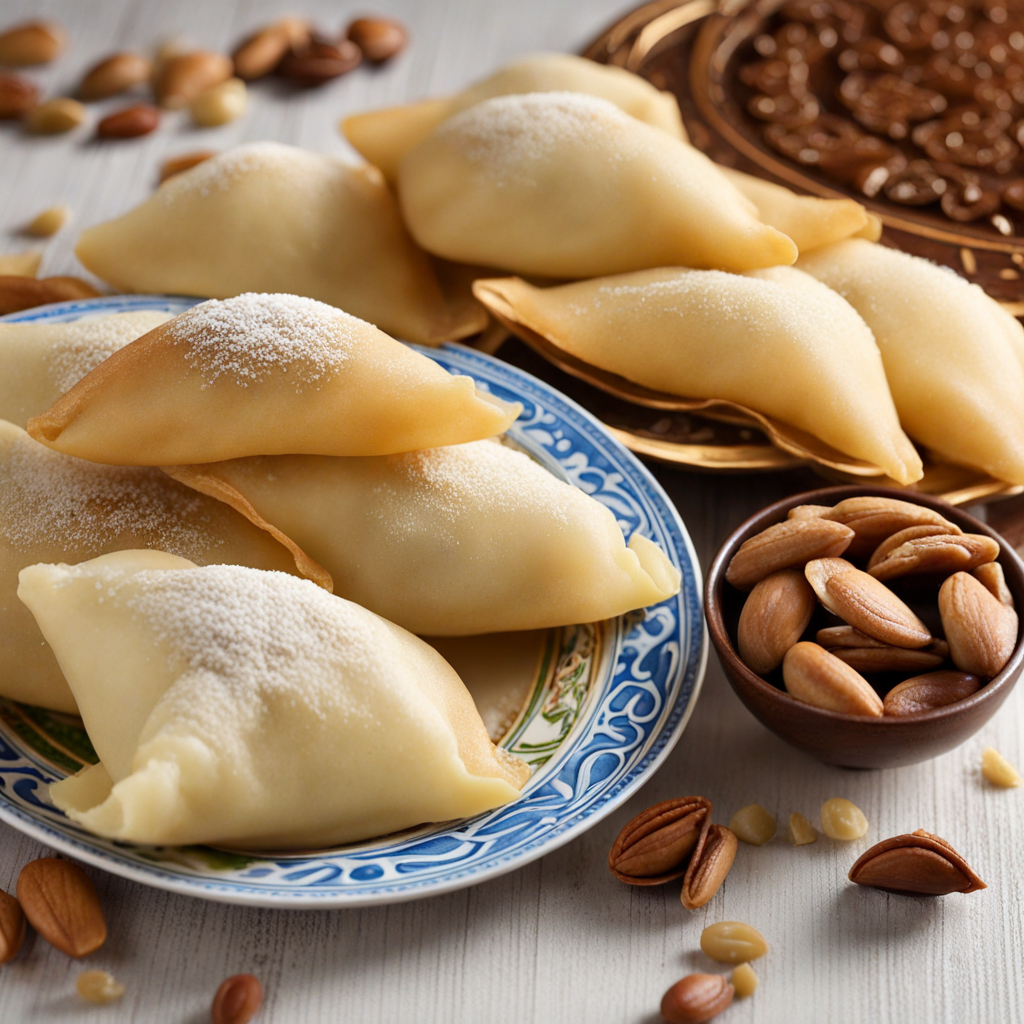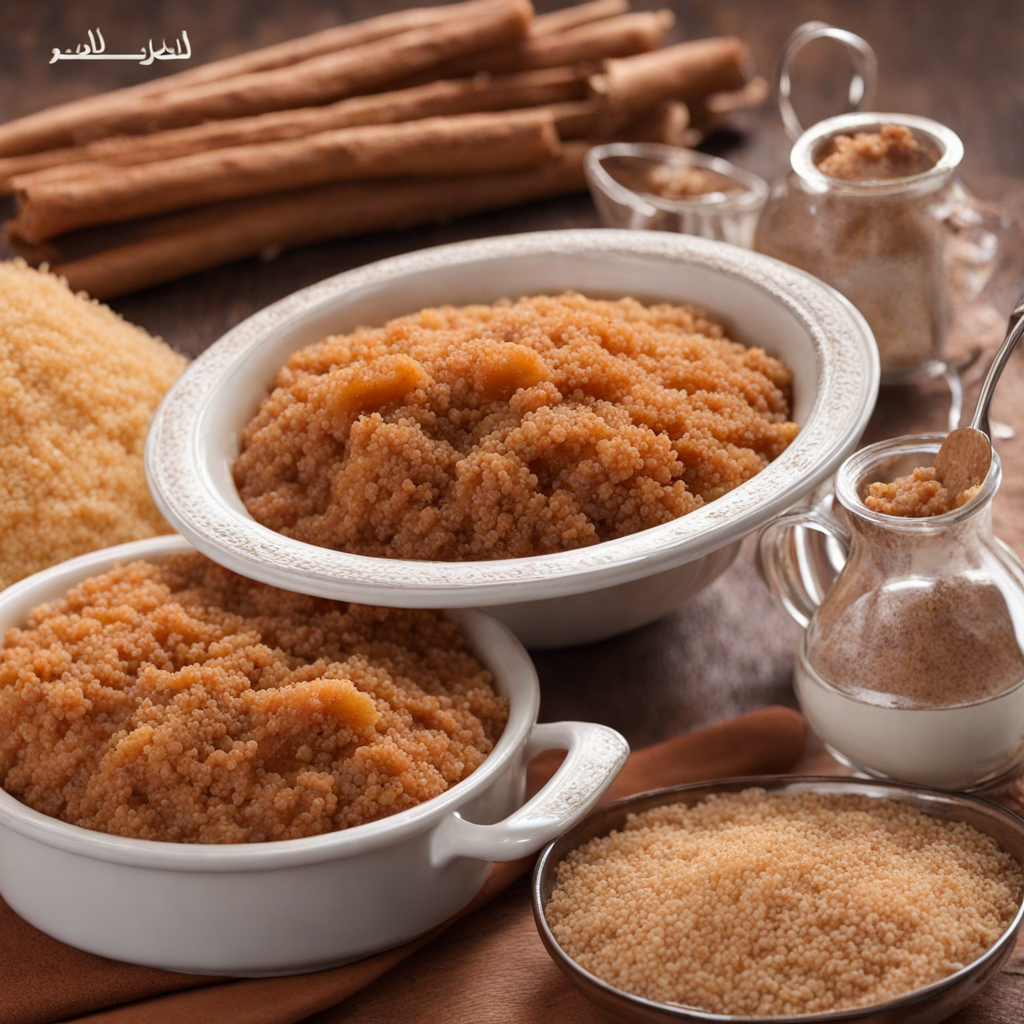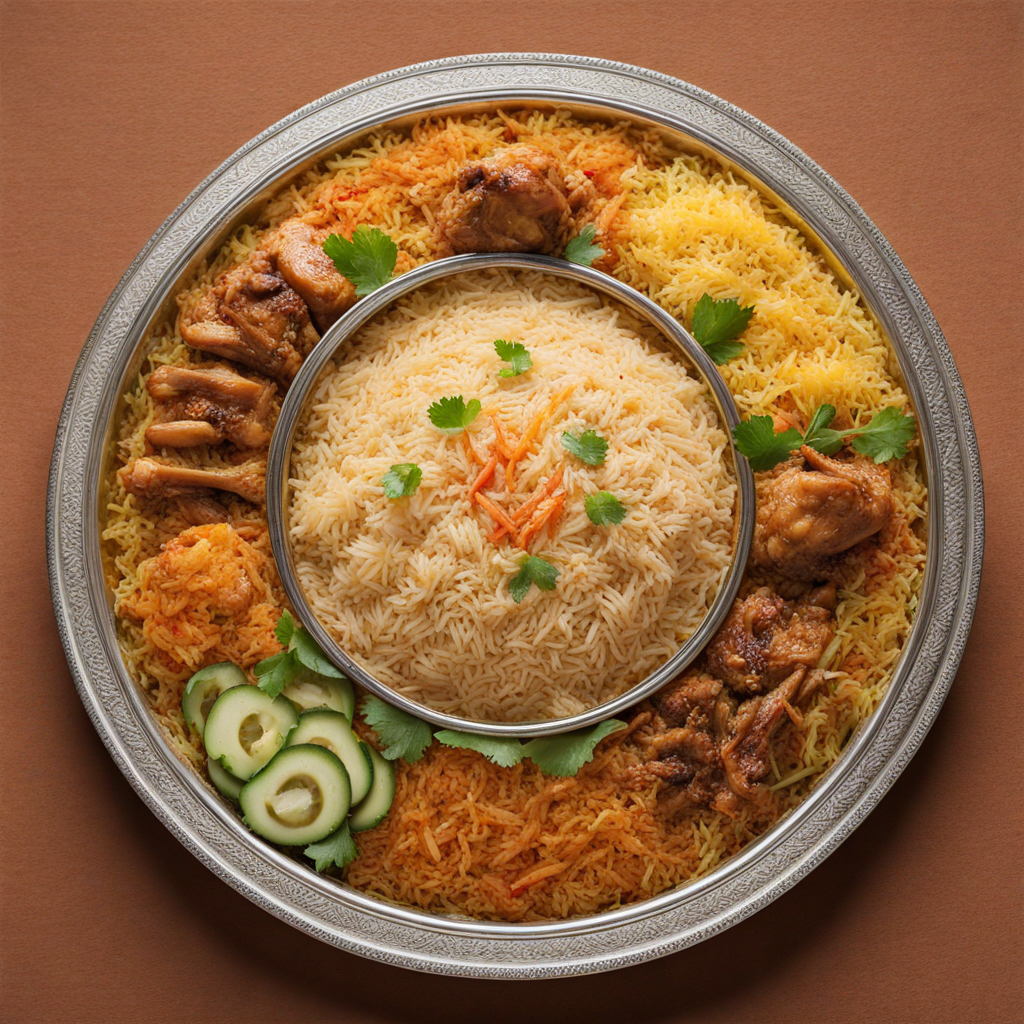Mutabbaq
Mutabbaq is a delightful street food originating from Saudi Arabia, known for its scrumptious layers and savory fillings. This dish consists of a thin, flaky pastry that is folded and stuffed with various ingredients, typically ground meat, vegetables, and spices. The dough is skillfully kneaded and stretched, creating a delicate exterior that crisps up beautifully when cooked. The filling can vary widely, with popular choices including seasoned minced beef or chicken mixed with onions, herbs, and spices, providing a hearty and satisfying bite with every mouthful. What makes Mutabbaq truly intriguing is the balance of flavors and textures. The crispy outer layer contrasts with the tender, flavorful filling, often enhanced with a touch of spice that dances on the palate. Served hot off the griddle, this dish is typically accompanied by a side of tangy dipping sauce, which can be made from chili, vinegar, or yogurt, adding an extra layer of flavor that complements the richness of the pastry. It's not uncommon to see vendors cooking Mutabbaq on the streets, attracting passersby with its irresistible aroma. Beyond its taste, Mutabbaq is also a cultural experience, often enjoyed as a snack or a light meal among friends and family. The communal aspect of sharing this dish adds to its charm, making it a favorite at gatherings and celebrations. Whether enjoyed for breakfast, as a late-night snack, or during festive occasions, Mutabbaq invites food lovers to explore the rich culinary traditions of Saudi Arabia, offering a unique taste that is both comforting and exciting.
How It Became This Dish
The History of مطبق: A Culinary Gem from Saudi Arabia In the heart of the Arabian Peninsula, where the sun scorches the earth and ancient trade routes once flourished, lies a dish that embodies the essence of Saudi Arabian cuisine: مطبق (Maqtab). This delightful food, often referred to as "Maqtab" or "Maqtabah," is a savory stuffed flatbread that has captivated the palates of both locals and visitors for generations. Its rich history, cultural significance, and evolution through time provide a fascinating insight into the culinary traditions of the region. #### Origins: A Culinary Crossroads The origins of مطبق can be traced back to the Bedouin tribes that roamed the deserts of Arabia. Historically, these nomadic communities relied on simple, portable food that could sustain them during their long journeys. Bread, a staple in the Middle Eastern diet, was often made from wheat or barley flour and cooked over an open fire or in a sand oven. Mطبق is believed to have evolved from these ancient bread-making practices. The name "مطبق" derives from the Arabic verb "طَبَقَ" (tabaqa), meaning "to fold." This reflects the method in which the dough is folded over a filling, creating a delicious pocket of flavor. Initially, مطبق was a humble dish, often filled with ingredients that were readily available in the arid landscape, such as dried meats, legumes, and local herbs. As trade routes developed, spices and other ingredients from around the region began to influence the dish. The introduction of spices such as cumin, coriander, and cardamom not only enhanced the flavor of مطبق but also reflected the diverse cultural exchanges that took place along the Silk Road and other trading paths. #### Cultural Significance: A Symbol of Hospitality Mطبق holds a special place in Saudi Arabian culture, often served during gatherings and celebrations. In a region where hospitality is a cherished value, this dish embodies the spirit of sharing and community. It is common to find مطبق served at weddings, family reunions, and festive occasions, where it is enjoyed alongside other traditional dishes. The preparation of مطبق is an art form in itself, often passed down through generations. Families take pride in their unique recipes, with each household adding its twist to the filling, which may include a combination of minced meat, vegetables, and spices. The communal aspect of cooking مطبق brings family members together, fostering bonds and creating lasting memories. In addition to its significance in family gatherings, مطبق is also popular in street food culture. Vendors in bustling markets and food stalls offer their own variations, making it accessible to everyone. The dish has transcended social boundaries, enjoyed by individuals from all walks of life, further solidifying its status as a beloved national treasure. #### Development Over Time: From Tradition to Modernity As Saudi Arabia underwent significant changes in the 20th century, so too did the culinary landscape. The discovery of oil and the consequent economic boom brought about modernization and globalization, influencing food practices and preferences. Traditional dishes like مطبق adapted to the changing times while retaining their core essence. In urban areas, مطبق began to evolve in response to contemporary tastes. While the traditional fillings of minced lamb or chicken remained popular, new ingredients emerged. Cheese, for instance, became a favored addition, appealing to younger generations and international visitors. The introduction of different cooking methods, such as frying or baking, allowed for a variety of textures and flavors, further enhancing the dish's appeal. Moreover, the rise of health consciousness among consumers prompted chefs and home cooks to experiment with healthier versions of مطبق. Whole wheat flour, for example, has replaced white flour in some recipes, catering to those seeking nutritious options. This adaptation reflects a broader trend in Saudi cuisine, where traditional dishes are being reimagined to meet modern dietary preferences. The globalization of food culture has also led to the fusion of مطبق with other culinary traditions. Influences from South Asian, Mediterranean, and even Western cuisines have resulted in innovative takes on the dish. For instance, some chefs have experimented with spicy fillings inspired by Indian cuisine, while others have introduced Western-style dipping sauces. This blending of flavors showcases the versatility of مطبق and its ability to resonate with diverse palates. #### مطبق in Contemporary Saudi Arabia Today, مطبق is celebrated not just as a dish but as an emblem of Saudi identity. Food festivals and culinary events often highlight traditional dishes like مطبق, emphasizing their importance in the national narrative. Chefs and food enthusiasts alike are striving to preserve the authenticity of the dish while also promoting it on a global scale. Social media has played a significant role in this cultural renaissance. Platforms such as Instagram and TikTok have allowed food lovers to share their culinary creations, with مطبق often taking center stage. The vibrant visuals of this stuffed flatbread, whether served on a traditional platter or in a modern café setting, have captivated audiences beyond Saudi Arabia, sparking interest in the rich culinary heritage of the region. Moreover, with the growth of tourism in Saudi Arabia, visitors are increasingly seeking authentic culinary experiences. مطبق has become a must-try dish for tourists exploring the local food scene. Restaurants and hotels have started to incorporate this traditional dish into their menus, ensuring that it remains a highlight of Saudi Arabian cuisine for future generations. #### Conclusion: A Timeless Culinary Heritage As we explore the history of مطبق, we uncover a narrative that reflects the resilience and adaptability of Saudi Arabian culture. From its humble origins among Bedouin tribes to its current status as a beloved national dish, مطبق represents a rich tapestry of flavors, traditions, and communal bonds. In an ever-evolving world, مطبق remains a symbol of hospitality, family, and cultural pride. As it continues to adapt to contemporary tastes and influences, this cherished dish will undoubtedly endure, serving as a delicious reminder of Saudi Arabia's culinary heritage and the stories that shape it. Whether enjoyed at a bustling market stall or around a family table, مطبق will always be more than just a meal; it is a celebration of life, tradition, and the spirit of togetherness that defines the people of Saudi Arabia.
You may like
Discover local flavors from Saudi Arabia


